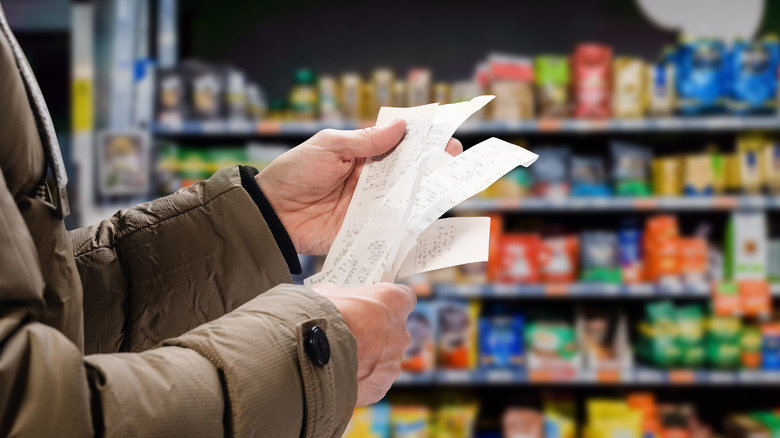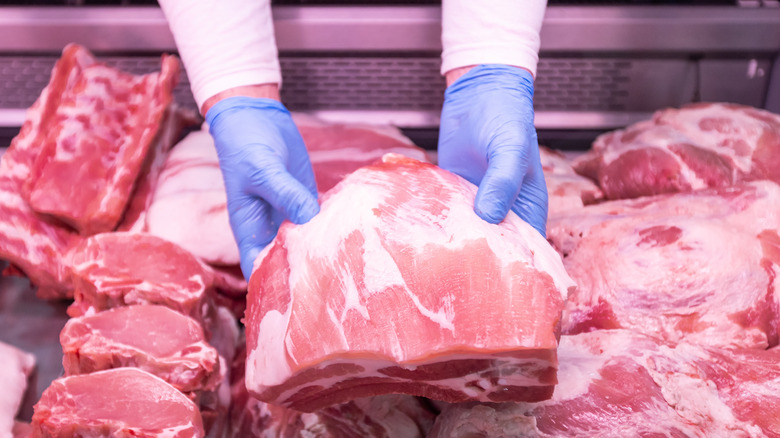The Foods With The Highest Price Increases In The Past 12 Months
People everywhere are struggling with the concerning food inflation crisis, which is rapidly driving the cost of everyday goods and services sky-high. While most people are hyper-focused on rising gas prices that are over $5 per gallon in several states, according to NPR, other items are getting hit hard, as well.
With inflation at a 40-year high, per Forbes, just about everything is more expensive than it used to be, but certain areas have been hit harder. For example, airline fares are up 37.8%, electricity costs 12% more than it used to, and rent prices are 5.2% higher.
People are also paying more than they really want to for standard grocery items, the cost of which usually experiences an average increase of 2% per year, says the USDA. However, 2021 saw "food-at-home prices" up 3.5 percent compared with the year before, 75% above the normal inflation rate. This trend has continued on a larger scale, unfortunately, as fruits and vegetables are up a whopping 11.8%, per Forbes. As incredible as it seems, fruits and veggies actually aren't the hardest hit grocery staples.
These grocery items are the hardest hit by inflation
Vegans can go ahead and high-five each other because they're not dropping dollars on the grocery staples that have experienced the worst price increases. The price of meats, fish, poultry, and eggs is up a stunning 14.2% since this time last year, according to a tweet by Yahoo! Finance.
Many consumers first noticed the price increase in meat products. As of March, 2022, pork products were up 14% and beef costs 20% more than it used to, CBS News reports. Experts blame this problem on the ongoing labor shortage, as well as the higher "input costs" of fuel, grain, and labor. Increased consumer demand is also playing a part.
Eggs, which are usually pretty affordable, are also seeing major price upticks. This is in large part because production costs are out of control. Primarily, the price to feed a chicken has increased 30% to 50% in the last couple of years, Vox reports. Obviously, consumers are going to see that ripple effect when the product hits store shelves, whether they really want to or not.

